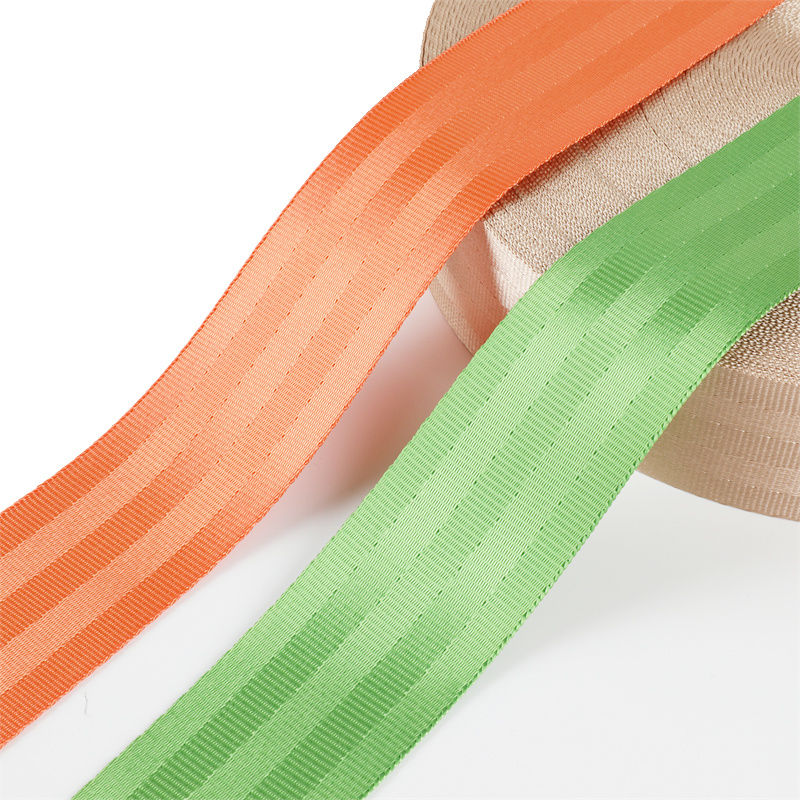How Outdoor Webbing Can Enhance Your Hiking Equipment for Unmatched Performance
How Outdoor Webbing Can Enhance Your Hiking Equipment for Unmatched Performance
Table of Contents
1. Introduction to Outdoor Webbing
2. What Is Outdoor Webbing?
3. Types of Outdoor Webbing
3.1 Nylon Webbing
3.2 Polyester Webbing
3.3 Dyneema Webbing
4. Benefits of Using Outdoor Webbing in Hiking Equipment
4.
Oct 22,2025

How Outdoor Webbing Can Enhance Your Hiking Equipment for Unmatched Performance
Table of Contents
- 1. Introduction to Outdoor Webbing
- 2. What Is Outdoor Webbing?
- 3. Types of Outdoor Webbing
- 4. Benefits of Using Outdoor Webbing in Hiking Equipment
- 5. Applications of Outdoor Webbing in Hiking Gear
- 6. Choosing the Right Outdoor Webbing for Your Needs
- 7. Maintenance and Care for Outdoor Webbing
- 8. Frequently Asked Questions
- 9. Conclusion
1. Introduction to Outdoor Webbing
In the realm of hiking equipment, **outdoor webbing** plays a crucial role in enhancing the **performance** and **reliability** of gear. As outdoor enthusiasts venture into nature, the right materials can make all the difference between a successful trip and an unfortunate mishap. This article delves into the world of outdoor webbing, exploring its types, benefits, applications, and how to choose the best webbing for your hiking needs.
2. What Is Outdoor Webbing?
**Outdoor webbing** is a type of strong, flat fabric typically made from synthetic fibers. It is used for various applications in outdoor equipment, including climbing gear, backpacks, and tents. Known for its **strength-to-weight ratio**, outdoor webbing is essential for ensuring safety and durability while hiking.
The material is designed to withstand harsh weather conditions, heavy loads, and significant wear and tear, making it an indispensable element for outdoor enthusiasts. Whether you're climbing steep mountains or setting up camp in the wilderness, the right webbing can elevate your experience.
3. Types of Outdoor Webbing
There are several types of outdoor webbing, each with unique properties that make them suitable for specific applications. Below, we discuss the most common types of webbing:
3.1 Nylon Webbing
**Nylon webbing** is known for its exceptional strength and elasticity. It is one of the most popular choices for outdoor gear due to its ability to stretch under load, which can absorb shock and reduce wear on the equipment. However, nylon is susceptible to UV damage and can degrade over time if exposed to sunlight for extended periods.
3.2 Polyester Webbing
**Polyester webbing** offers superior UV resistance and is less likely to stretch compared to nylon. This makes it an excellent choice for outdoor applications where consistent strength is vital. Polyester webbing is often used in items like straps, harnesses, and tents, making it a versatile option for hikers.
3.3 Dyneema Webbing
**Dyneema webbing** is a high-performance option that is incredibly lightweight yet strong. Known for its low stretch and high abrasion resistance, Dyneema is ideal for minimalist hikers looking to reduce pack weight without sacrificing safety. However, it comes at a higher price point compared to nylon and polyester.
4. Benefits of Using Outdoor Webbing in Hiking Equipment
The integration of outdoor webbing into hiking gear offers several benefits that enhance the overall performance of your equipment.
4.1 Durability
Outdoor webbing is engineered to endure the rigors of outdoor conditions. Its robust construction ensures that it can handle heavy loads, resist wear, and withstand extreme weather. This durability is crucial for hikers who rely on their gear for safety and performance.
4.2 Lightweight Features
One of the primary advantages of using webbing is its lightweight nature. Hikers often seek to minimize their pack weight, and webbing provides a solution without compromising strength. This lightweight characteristic allows for easier transport and less fatigue during long hikes.
4.3 Versatility
Outdoor webbing can be used in various applications, making it a versatile choice for hikers. From securing gear to creating slings and straps, webbing adapts to different needs and environments, enhancing the functionality of your equipment.
5. Applications of Outdoor Webbing in Hiking Gear
Understanding how outdoor webbing is applied in hiking gear can help you appreciate its significance in enhancing your outdoor experience. Below are key applications of outdoor webbing:
5.1 Harnesses
Webbing is a fundamental component of climbing harnesses. Its strength and durability ensure safety during climbs, while its lightweight nature allows for comfort and ease of movement.
5.2 Backpacks
Many hiking backpacks utilize outdoor webbing for support straps and attachment points. This design feature allows hikers to customize their gear setup, making it easier to carry additional items securely.
5.3 Tents
In tent construction, outdoor webbing is often used for guy lines and tension straps. These components are essential for maintaining the tent's structure and ensuring stability in varying weather conditions.
6. Choosing the Right Outdoor Webbing for Your Needs
Selecting the appropriate outdoor webbing involves considering several factors related to performance and application. Here are key points to guide your decision-making process:
6.1 Strength Ratings
When choosing webbing, pay attention to strength ratings, usually measured in pounds. Ensure that the webbing can support your intended load, whether for climbing, securing gear, or setting up a tent.
6.2 Weather Resistance
Consider the environmental conditions you will encounter during your hikes. If you expect prolonged exposure to sunlight or wet conditions, opt for webbing materials with superior weather resistance, such as polyester or Dyneema.
7. Maintenance and Care for Outdoor Webbing
Proper maintenance can extend the life of your outdoor webbing. Here are some tips to ensure your webbing remains in excellent condition:
- Regularly inspect webbing for signs of wear, fraying, or UV damage.
- Store webbing in a cool, dry place away from direct sunlight.
- Clean webbing using mild soap and water, avoiding harsh chemicals that can degrade the material.
- Allow webbing to dry completely before storing to prevent mold and mildew.
8. Frequently Asked Questions
8.1 What is the difference between nylon and polyester webbing?
Nylon webbing offers greater elasticity and shock absorption, while polyester webbing is more resistant to UV damage and has less stretch, making it suitable for applications requiring consistent strength.
8.2 How do I determine the right strength for webbing?
To determine the right strength, consider the maximum load you expect the webbing to support. Always choose webbing with a strength rating that exceeds your expected load to ensure safety.
8.3 Can outdoor webbing be used for swimming or water sports?
While some types of webbing are water-resistant, not all are suitable for prolonged exposure to water. Always check the manufacturer's specifications before using webbing in aquatic environments.
8.4 How can I secure my gear with outdoor webbing?
Outdoor webbing can be used to create ties, slings, or straps to secure gear in backpacks or during transport. Simple knots can be employed to ensure a tight hold.
8.5 Is Dyneema webbing worth the investment?
If you're a minimalist hiker prioritizing weight savings and high performance, Dyneema webbing is worthwhile. Its strength and low weight often justify the higher cost for serious outdoor enthusiasts.
9. Conclusion
Incorporating **outdoor webbing** into your hiking equipment can significantly enhance your outdoor experience by providing durability, lightweight options, and versatility. By understanding the various types of webbing, their benefits, and appropriate applications, you can make informed choices that elevate your hiking adventures to new heights. Whether you're climbing mountains or trekking through forests, the right webbing will ensure your gear performs at its best, enhancing both safety and enjoyment on the trails.
Related Posts
Contact Us
E-mail:
Phone/WeChat:
Factory Address:
No. 601 ShiXing Road, Jimei District, Xiamen, 361024, China







